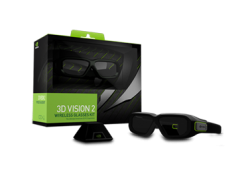Yes, we can enable Hardware tessellation once some driver bugs are fixed.
Quality: Determines the overall quality of the graphics. Its a good baseline to know what to expect from each of the settings.
Texture Quality: Keep this one on normal unless you have a lot of video memory to spare. Medium performance hit.
Texture Filter: Determines the level of anisotropy (e.g. how clear the textures look). Unless youre running a low-end graphics card, you shouldnt have any problem bringing this all the way up. Low performance hit.
Hair Quality: Makes Laras hair look realistic. I recommend setting it to TressFX for the best experiencebut only if you have an AMD card. It doesnt work well for nVidia cards. Very high performance hit.
Anti-Aliasing: Smooths jagged edges. Itll give you a major performance hit unless you set it on FXAA or turn it off. Computers with high-end set ups should experiment with 2xSSAA and 4xSSAA
Shadows: Determines how many shadows are projected onto the scene. Leave this one on Normal.
Shadow Resolution: Defines the quality of the shadows. High performance hit.
Level of Detail: Determines how objects look from a distance. Unless you need to see high-quality leaves and flowers from miles away, leave this one on normal. Medium performance hit.
Reflections: Determines which objects cast reflections and at what quality. Medium performance hit.
Depth of Field: Gives close-up scenes a bokeh appearance in the background. Medium performance hit, but only during those occasions.
SSAO: This stands for screen space ambient occlusion. This is one of the biggest performance-affecting settings in the game. Adds global shadow and lighting effects to every scene and allows objects to cast realistic shadows on other objects in the scene. Goes all the way up to Ultra.
Post-Processing: Adds a bunch of motion blur. High performance hit.
Tessellation: Adds detail to models in the game. Currently problematic and related to crash issues, recommend setting it to off for now.
High Precision: This poorly defined name describes a feature that adds darker shades and different intensities of light to the game. In short, it makes the game look more realistic. Minor performance hit. Keep it on.
http://www.gamefront.com/tomb-raider-2013-graphical-preset-comparisons-performance-tips/


